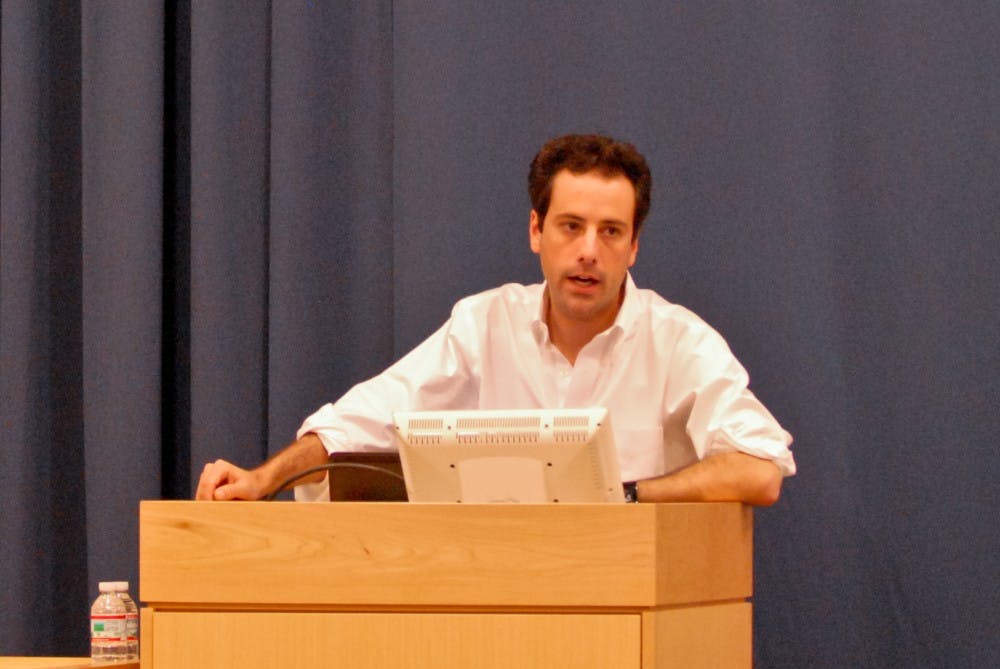“If someone says they don’t like the cute animals on BuzzFeed, you should turn to them and ask if they are a robot,” Jon Steinberg ’99, the president and COO of BuzzFeed, said jokingly during a lecture he delivered on Tuesday night.
But it was not just a joke. BuzzFeed has become known for its posts involving animals, which are often widely shared through social media. Animals are part of the company’s plan, he said.
To explain this rationale behind BuzzFeed’s strategy, Steinberg asked the audience to look to the history of The New York Times. Many years ago, The New York Times rolled out “leisure” sections such as Style, Arts and Home next to its hard news in order to capture a more leisure-inclined audience, he explained. Steinberg believes that animals are another such “leisure” topic for BuzzFeed’s young audience.
“The concept of having entertaining content adjacent to hard news content is very traditional, actually,” Steinberg said. “It’s just the content has to be new.”
It is this understanding of media that successfully puts BuzzFeed on the media radar, he said. He explained that BuzzFeed is further expanding the range of “verticals” it covers, with sections devoted to politics, business, tech, celebrity, food, video and more.
However, Steinberg noted that BuzzFeed does not jump into new topics blindly. Sections such as politics and business were only launched after the company found the right people to lead and develop them, he said.
When it comes to media trends, Steinberg said he is acutely aware of just how fast the velocity of change is in the online media industry. As content is increasingly accessed through mobile phones, Steinberg said, “social is mobile.”
In part because consumers increasingly prefer to access most social media on mobile devices, BuzzFeed has pursued a content-driven advertising model rather than the more established, direct-sold-banners method of advertising, Steinberg said. He explained that banners “don’t work; people hate them, [and] they’re intrusive,” noting that many people who click on these banners on their mobile devices often click unintentionally.

Instead, Steinberg said that BuzzFeed has been able to provide “digital word-of-mouth marketing” content that has a click-through rate many times that of banner ads by embracing content-driven advertising.
Steinberg concluded his talk with a final thought: Content and distribution will eventually be completely separate.
“If you want to go into content creation, it is wide-open right now,” Steinberg said, explaining that in the future, people in the media industry will either be in the delivery business or the content business, but not both.
“The essence of media and entertainment is that it has to be the next thing,” he said.









